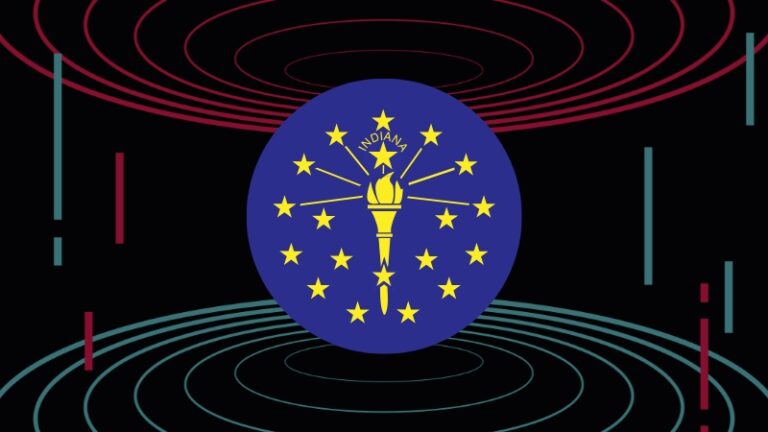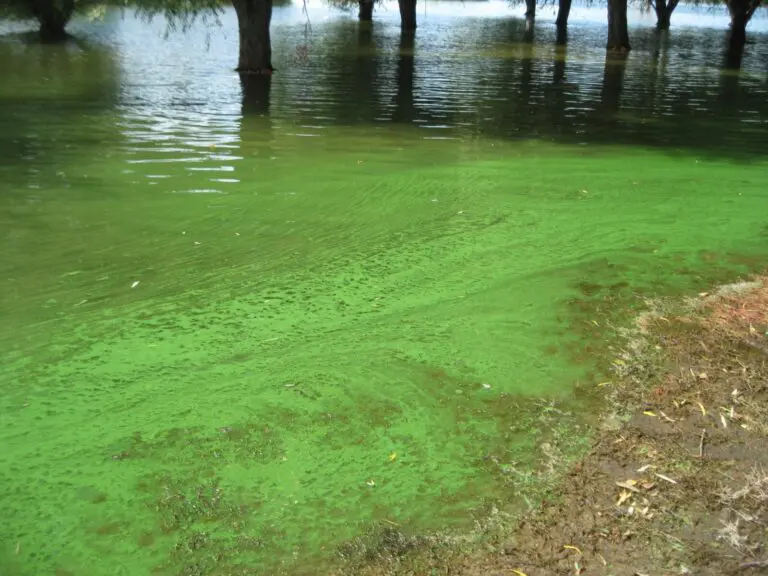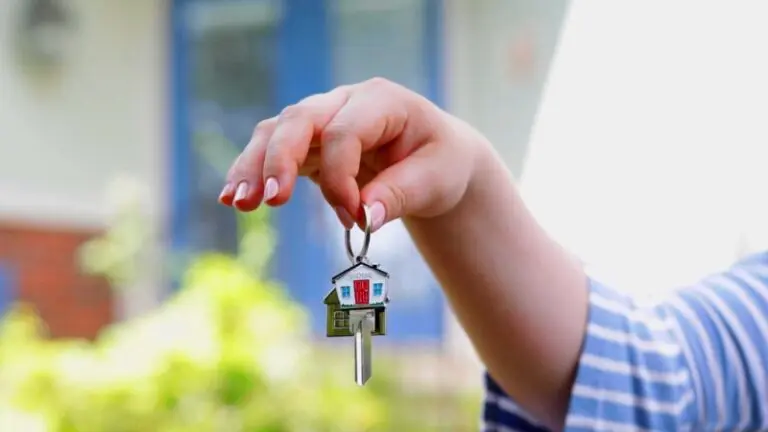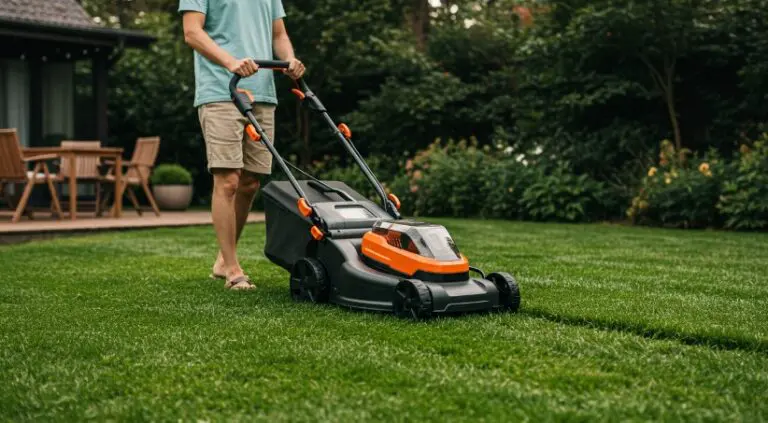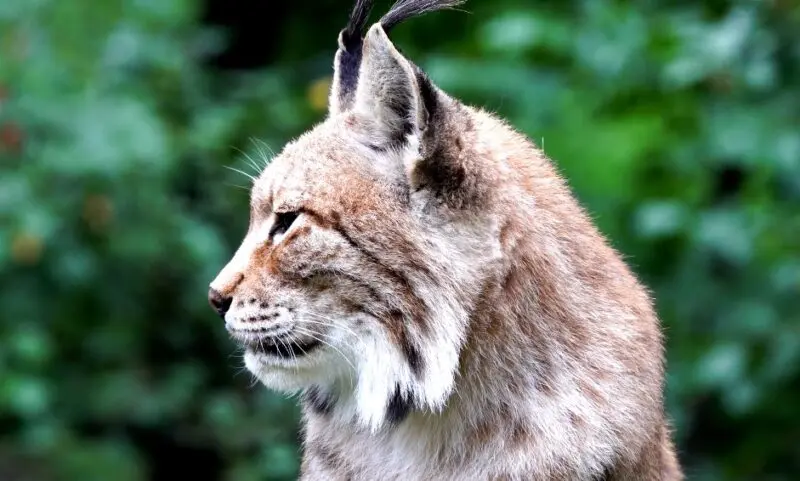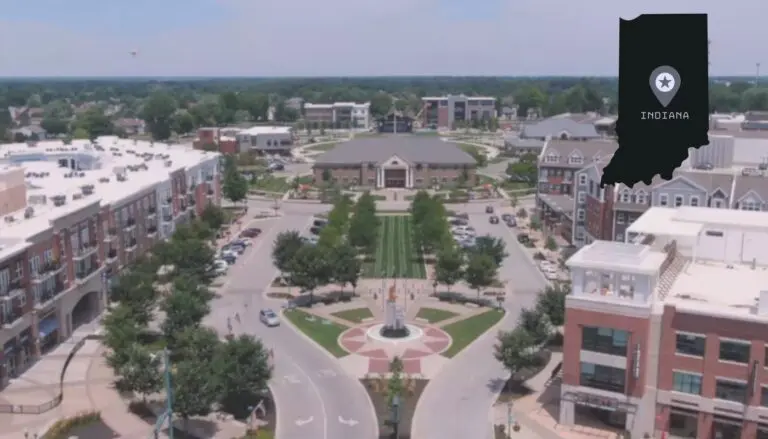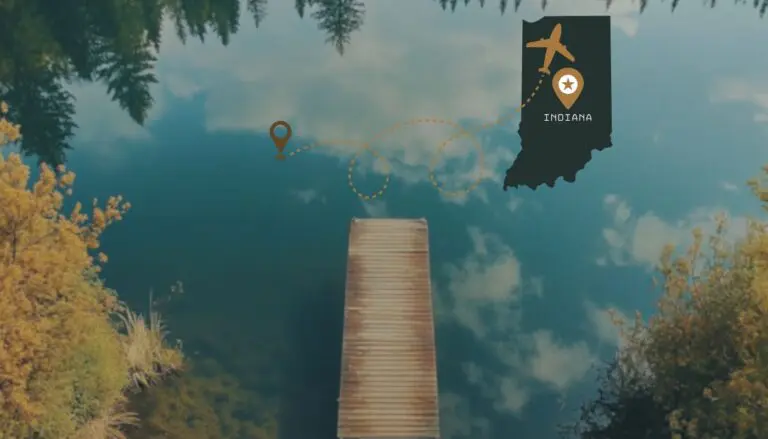Bobcats, once nearly extinct in Indiana, are making a notable comeback. Conservation efforts have played a significant role in the population rebound, pointing out the importance of ongoing support and awareness.
Now, let us see where we can find them in Indiana and how many of them are there.
Table of Contents
ToggleBobcat Natural Habitats
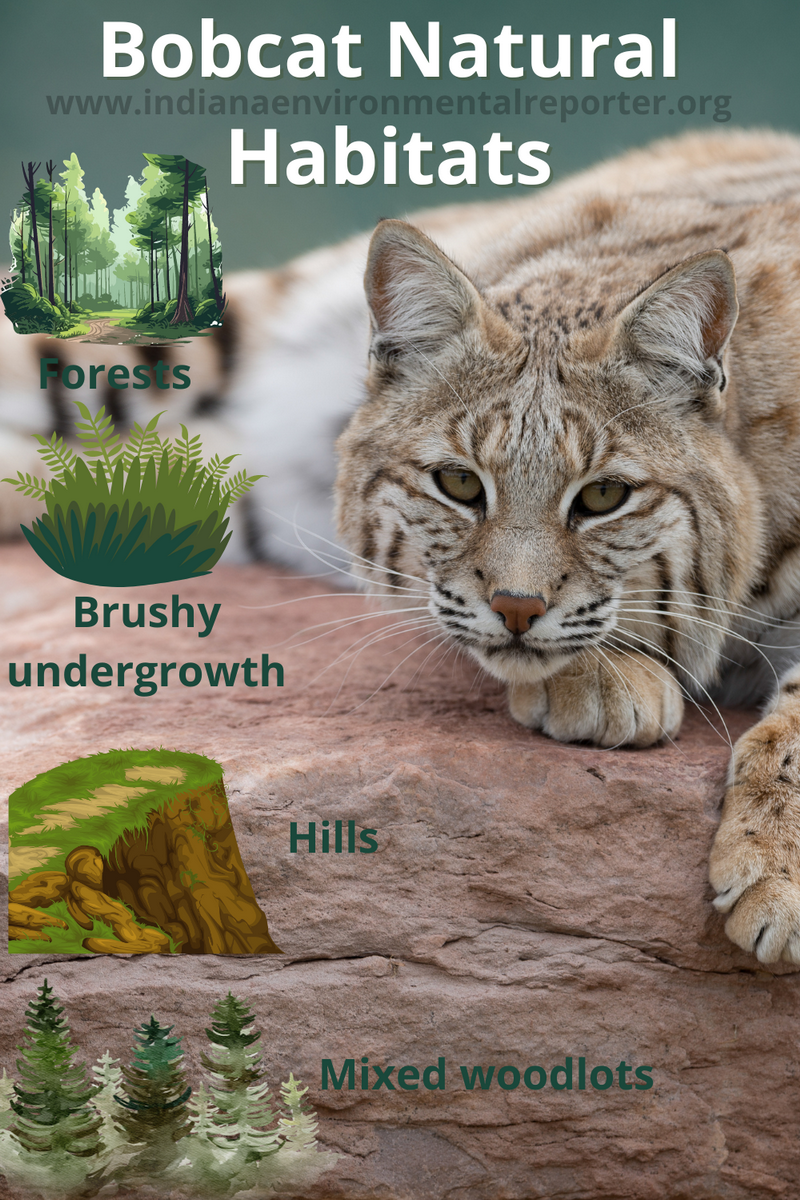
Bobcats are highly adaptable animals, thriving in a variety of habitats across Indiana. Their preferred habitats include:
- Forests
- Brushy undergrowth
- Hills
- Mixed woodlots
The following areas provide the cover and resources necessary for their survival, such as food, shelter, and safe places for raising their young:
| Location | Description |
|---|---|
| Hoosier National Forest | Expansive forest in southern Indiana with dense woodlands and remote areas, ideal for bobcats. |
| Yellowwood State Forest | Near Bloomington, known for several bobcat sightings and popular with wildlife enthusiasts. |
| Morgan-Monroe State Forest | Located in southern Indiana, rich in biodiversity with occasional bobcat sightings. |
| Patoka Lake | Large reservoir surrounded by woodlands, a prime area for bobcats in southern Indiana. |
The relatively low human population density in these areas reduces the likelihood of human-wildlife conflicts, allowing bobcats to thrive.
West-central Indiana is another key region for bobcat populations, with its mix of woodlots, agricultural fields, and wetlands providing a diverse landscape for these animals. The varied terrain offers ample opportunities for hunting and finding shelter, while the presence of waterways ensures a reliable source of water.
Bobcats are also expanding their presence in north and east-central Indiana and have also been spotted in Lafayette.
How to Identify a Bobcat
@ecobunsbabyco What is a bobcat? Here are a few ways to tell them apart from a house cat. If you need a bobcat of your own, we have plush bobcats that are much safer than owning an actual bobcat. #whatisabobcat #bobcat #bobcatsoftiktok #ecobunsbabyco #warmies
While they might resemble a large house cat from a distance, bobcats have some distinctive features that set them apart from other animals you might encounter in the wild:
- Short tail: Only 5 to 7 inches long with a black tip, giving them their name.
- Coat color: Typically a brownish tan, often adorned with black spots that can vary in visibility.
- Unique markings: Look for black bars on the inside of their front legs and a white band on the back of each ear.
- Size: They weigh between 15 and 35 pounds, stand about 2 feet tall, and measure around 3 feet in length.
Current Population
The current bobcat population in Indiana has shown a remarkable increase in recent years, thanks to effective conservation measures. Some estimates state that there are around 1000 of them at the moment.
Reports of bobcat sightings and distribution data indicate that these animals are expanding their range, with increasing numbers being observed in north and east-central Indiana as well.
Field surveys, trail camera footage, and public reports all contribute to understanding the distribution and density of bobcats across Indiana. These methods help biologists monitor population trends and plan effective management strategies.
The increasing number of sightings also indicates that bobcats are becoming more active and visible, which may be due to their growing confidence and successful adaptation to various environments within the state.
Might have found a good site by accident for bobcat activity right out back of my place, a male has been visiting with some frequency, occasionally marking pic.twitter.com/vzF3D1oisV
— brad von blohn (@campanulacea) September 22, 2024
Observing Them in the Wild
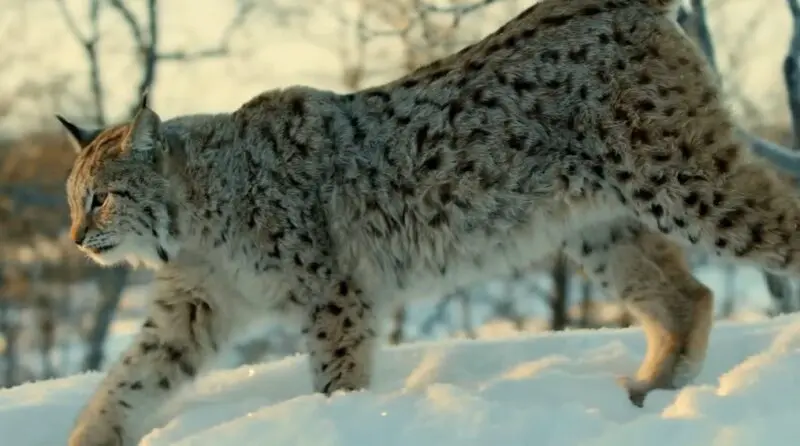
Observing bobcats in the wild can be a thrilling experience, but it requires knowledge of their behavior and habitats. The best times for sightings are usually during dawn and dusk when they are most likely to be hunting or moving about.
Trail cameras and surveillance videos have become invaluable tools for wildlife enthusiasts and researchers seeking to observe bobcats. These technologies allow for continuous monitoring without disturbing the animals.
- Behaviors
- Movements
- Interactions
What to Do If You Encounter a Bobcat
Bobcats sometimes come near towns, but they don’t usually pose a danger to people or pets. There have been no confirmed reports of them attacking pets in Indiana. If you see one, there’s no need to worry—they prefer to stay away from humans and will leave quickly if they notice you.
- Maintain a respectful distance and avoid any actions that might provoke or startle them.
- Observers should stay quiet, avoid making sudden movements, and use binoculars or cameras with zoom lenses to get a closer look.
- Wearing camouflage or neutral-colored clothing can also help blend into the surroundings and reduce the likelihood of detection.
The #Indiana Department of Natural Resources is reviewing a bobcat #hunting season, sparking calls from conservationists to set a zero quota until reliable population data is available. A special hearing takes place Nov. 14th.https://t.co/1TwXwsACX5
— Public News Service (@PNS_News) November 13, 2024
The Bottom Line
Bobcats in Indiana have made a significant comeback, thriving in various habitats across the state. So, if you’re out exploring the forests and fields of Indiana, keep your eyes peeled and your camera ready. Who knows? You might just be lucky enough to catch a glimpse of one of these incredible wildcats.
Related Posts:
- The Ultimate Guide to the Indiana State Fair 2025
- 13 Must-See Attractions in Fort Wayne - A Complete Guide
- Seasonal Home Maintenance Guide - What to Do and When?
- Is Indiana a Republican or Democratic State? True…
- How Environmental Changes Are Reshaping Housing in…
- The Mastodon Could Become the State Fossil, But Is…



